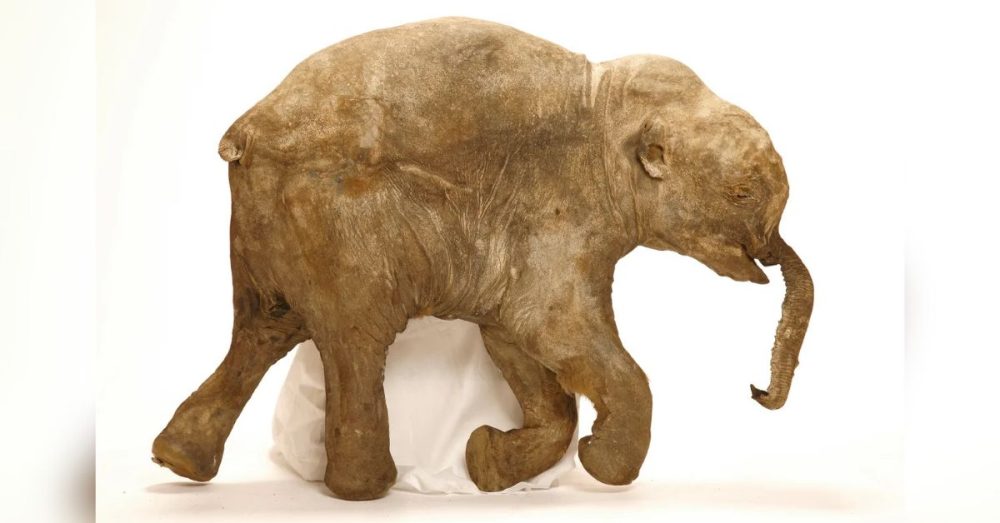A remarkably well-preserved baby mammoth, nicknamed “Yana,” has been discovered in the melting permafrost of Siberia, thrilling scientists with its exceptional condition.
Found in the Batagaika crater of eastern Siberia, the mammoth is estimated to have been about one year old at the time of its death and lay frozen for approximately 50,000 years. Local residents stumbled upon the find, noticing the partially thawed remains about 130 feet below the surface. The discovery is expected to provide groundbreaking insights into mammoth development, their Ice Age habitats, and the impacts of a changing environment.
Researchers from the Lazarev Mammoth Museum Laboratory at the North-Eastern Federal University in Yakutsk unveiled the discovery, describing Yana as the “best-preserved” baby mammoth ever found. Unlike previous finds, Yana’s head, trunk, ears, and mouth remain intact, offering researchers an unprecedented opportunity to study the physical traits of these extinct creatures. “This unique research find has amazed us all,” said Anatoly Nikolaev, rector of the laboratory, in a statement emphasizing the global significance of the discovery.
The baby mammoth measures four feet tall, weighs 400 pounds, and is 6.6 feet long. Scientists hope Yana’s remains will shed light on how mammoths adapted to their cold environments, particularly during the harsh Ice Age periods. The ongoing research will analyze genetic material and environmental factors to reconstruct the ancient ecosystem. Collaboration with genetic researchers across Russia is expected to deepen understanding of Yana’s life and the circumstances of her preservation.
The Batagaika crater, often referred to as the “gateway to the underworld,” is the largest permafrost crater globally and has become an archeological hotspot. As climate change accelerates permafrost thawing, numerous prehistoric discoveries have emerged from the region. In recent years, the melting permafrost has revealed treasures such as a mummified 32,000-year-old sabre-tooth cat in 2020 and the remains of a 44,000-year-old wolf in 2021. These findings collectively highlight the rapid loss of ancient ice layers and the rich trove of Ice Age history hidden within.
Yana’s discovery underscores the role of local communities in preserving history. The residents of Bataga village were instrumental in bringing the mammoth to scientific attention. Their serendipitous encounter with the partially thawed remains showcases the value of vigilance and environmental awareness, particularly in regions undergoing significant geological changes due to global warming.
Scientists are conducting further tests to confirm Yana’s exact age at death and to unravel more details about her life. Preliminary analyses suggest she lived in a cold, challenging environment, relying on adaptive traits that defined her species. Insights from Yana’s remains could enhance understanding of Ice Age climate patterns and provide valuable context for studying current ecological changes.
As discoveries like Yana’s continue to emerge, they reveal a frozen record of Earth’s distant past while serving as a stark reminder of the present. Climate change is accelerating the thawing of permafrost, revealing ancient wonders but also raising concerns about the release of trapped greenhouse gases. For now, Yana remains a scientific marvel, offering an extraordinary glimpse into a world that vanished thousands of years ago.


